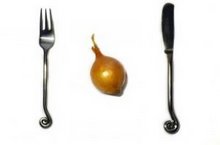 So we have finally arrived (my first post from Italy)!! We arrived yesterday in Parma and are here until tomorrow when we are off to Lucca to stay with Doris. We wanted to make a point of eating some of this region's specialties including Proscuitto di Parma, Parmigiano Reggiano, and Lambrusco wine-un vino frizzante rojo (a sparkling red wine).
So we have finally arrived (my first post from Italy)!! We arrived yesterday in Parma and are here until tomorrow when we are off to Lucca to stay with Doris. We wanted to make a point of eating some of this region's specialties including Proscuitto di Parma, Parmigiano Reggiano, and Lambrusco wine-un vino frizzante rojo (a sparkling red wine).Wednesday: On Wednesday night, after a long day of traveling, we ate at La Duchessa which is in the middle of Piazza Garibaldi (this piazza was the center of the Etruscan city of Parma). To start we had Prosciutto di Parma, and then we each had a pizza: I had Pizza di Poppi (bufala, pomodoro, basilico, salami piccante, prosciutto cotto, grana, e ementhal/mozzarella, tomatoes, basil, spicy sausage, cooked prosciutto, and 2 other kinds of cheese). Reed had Pizza Euro: mozzarella, pomodorini, crudo, basilico salame piccante, ruggola, e funghi porcini/mozzarella, small tomatoes, proscuitto crudo, basil, spicy salame, arugula, and porcini mushrooms). We were both far to hungry to take a picture of any of this food!
Thursday: Thursday we ate at Trattoria da Filipps (on Borgo Paggeria): I had some gnocchi patate and Reed had linguine alla carbonera. Again, we were both too hungry to take any pictures. There was one customer (who Reed thought looked a lot like Ben Franklin) who was cutting people's hair at the back of the restaurant- glad we saw this after lunch! (he was also doing this after what appeared to be 4 bottles of wine).
For dinner we chose to go to the Salumeri Verdi (Via Verdi, 6), which sells only products from Parma, including a great selection of meats and cheeses. For our picnic dinner in Hotel Torino's garden we bought: Lambrusco (un vino frizzante rojo-sparkling red wine), Parmiggiano Reggiano, Strolghini (il salame di culatello), culatello DOP (Ducale Colorno), e Salame di Felino Naturale. The Felino Naturale was our favorite: made only from the meat and fat and seasoned with salt and pepper. The Culatello DOP is DOC- only 6 villages along the Po River are allowed to produce it (it is said that the closer to the Po, the better the meat). One of things that makes this meat unique is that instead of being cured in a dry environment, it is cured in a humid one, and only the meat from the exterior of the leg is used.. It is also unique in that only 18,000 pieces of culatello is produced each year (in contrast to 90,000+ of other types of "ham" from this region). The Strolghino is a salame made of the meat used to make the culatello. The Parmigiano Montagna was cured for 2.5 years (all parmigiano must be cured for a minimum of 2 years). We got a 2 pound piece for 5 Euro! Interestingly enough, the final product cannot contain more than 33 percent fat, so to begin with, a very high milk fat milk is used. Our bottle of Lambrusco was actually the 76th bottle from the 2005 years production! We got it for a bargain 4,30 Euro!




 Lambrusco
Lambrusco








